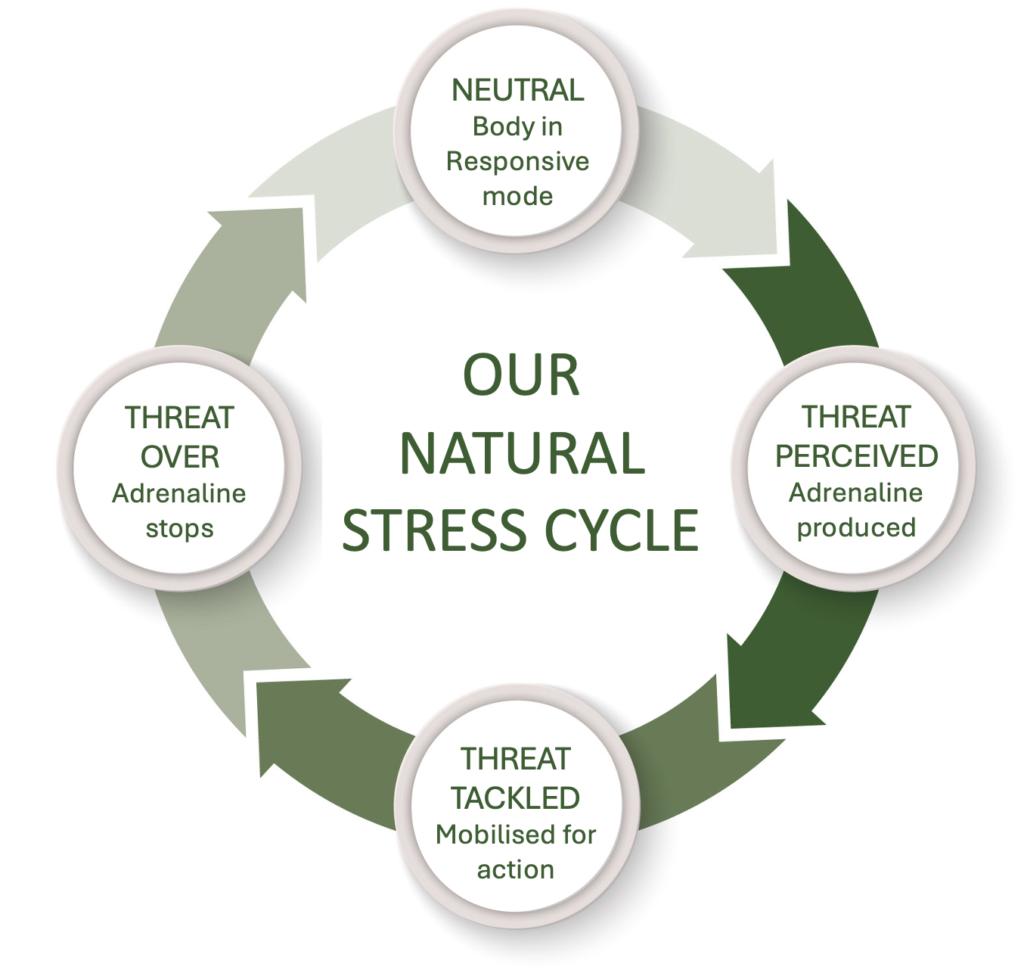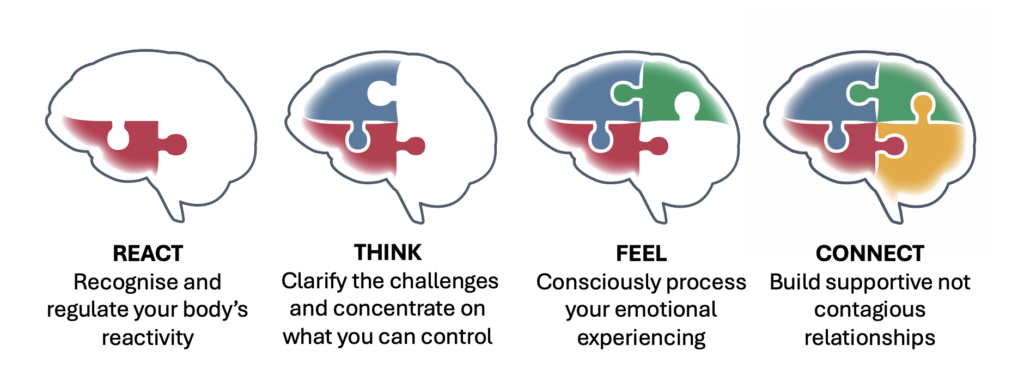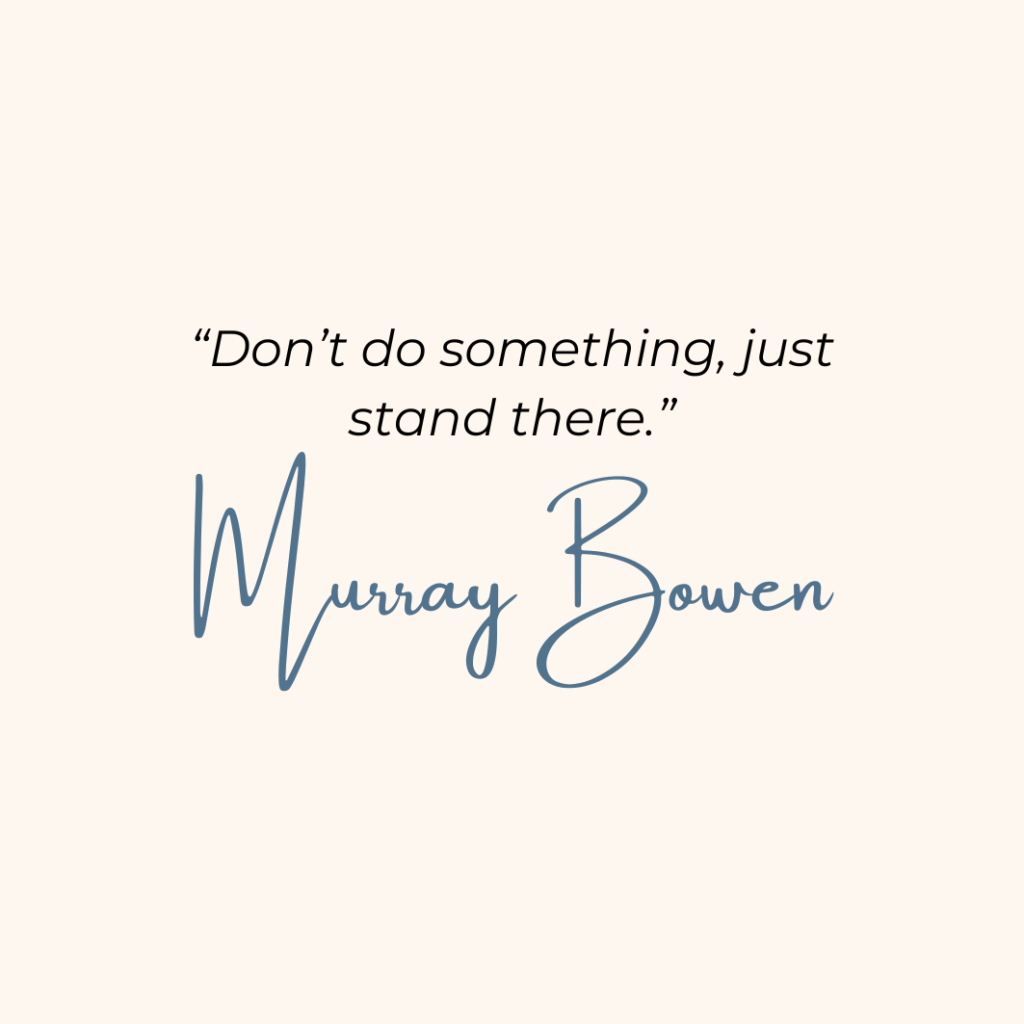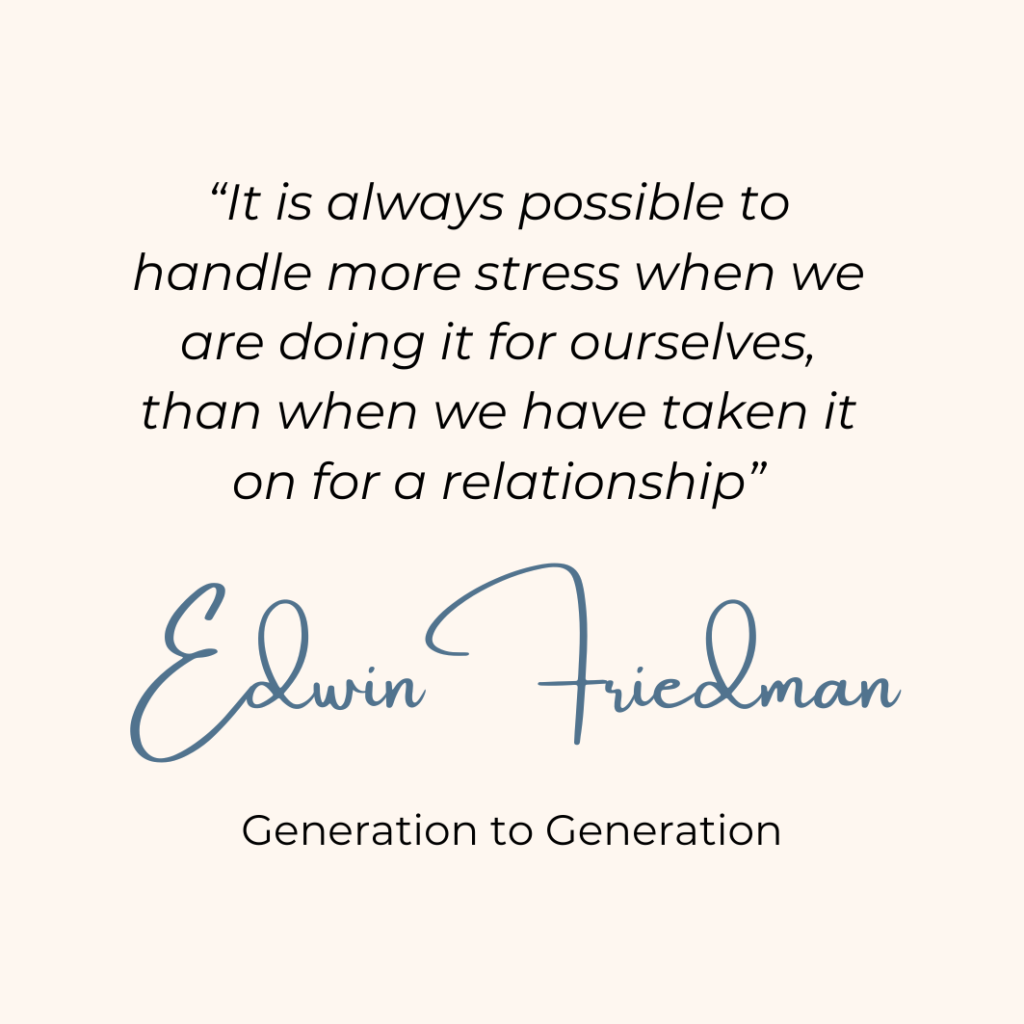
Discover why your stress cycle gets stuck, the health risks of an unfinished stress cycle, and practical tips to break free and complete the stress cycle effectively.
Part 1 of a 2-Part Series: Understanding the Stress Cycle and How to Reduce Stress. To read the first blog click here
The stress cycle is our body’s natural response to stress, triggered by a perceived threat or challenge. The stages capture the way our brain and body use adrenaline to effectively tackle the danger facing us. Once the stressor is resolved, the stress cycle completes and returns us to a place of calm.
However, the stress cycle can stall, creating chronic stress and negatively impacting our mental and physical health, contributing to conditions like anxiety, burnout and causing us to experience the negative consequences of stress including anxiety, burnout and immune system dysfunction.

1. Chronic ongoing stressors
When our difficulties continue for extended periods, or multiple stressors overlap then acute short-term situations become chronic. There is no ending to the challenges facing us, the stress cycle is still required and thus adrenaline production continues unabated.
2. Highly sensitive threat detector
Individuals who are highly sensitive, neurodivergent and who have experienced trauma have amygdala which are more sensitive to threat. Danger is perceived and adrenaline produced in a greater variety of situations and when facing a lower level of threat than that which would prompt adrenaline release in others.
3. No action to tackle threat
Adrenaline energises our body and in order to complete the stress cycle we need to release that energy. If we experience threat which is out of our control, or where we face complex challenges that do not offer an action-orientated outlet for the release of energy, then adrenaline is not released and continues to flood the system.
4. Living and working in toxic atmospheres
An ongoing tense atmosphere at work or within our personal lives acts as a chronic stressor. The whole environment is toxic and our body reacts to this as a threat. Unlike explicit stressors, this type of implicit threat is felt more intensely than it is articulated making it one of the worst types of stress to experience: it is long-term and there is no clear action for solution.
Families or organisations who have a low level of collective differentiation never return to a neutral baseline of calm. The relationship system’s automatic default is tension, stress and anxiety. If we grow up, or work extensively in such an environment, then chronic stress also becomes our automatic default.
5. Secondary Relational Stress
Our experience of pressure, stress or threat rarely occurs in isolation. We are usually with others, either sharing the same stressors or each with our own pressures to contend with. We each have a certain amount of stress which we are able process and manage internally. Once this critical point is passed, those around us will start to externalise their stress and pass it onto us via our Social Nervous System.
As a social species dependent upon the survival of the tribe our team brain makes us highly sensitive to other people’s stress. We throw stress between us like a hot potato, and when we catch another's stress we experience it as if it were our own, thus other people’s stress prompts additional adrenaline production within us. Furthermore, because another’s problems are not ours to resolve, we cannot release the build up of energy, further stalling our stress cycle.

When our stress cycle remains stalled, we adjust to our raised adrenaline levels so chronic stress becomes our “new normal”. We believe that we are thinking and behaving in a proportionate and appropriate manner, but if we could compare ourselves to our neutral state we would realise that we are highly reactive, making knee-jerk decisions, led by extreme emotions of anger, fear or terror with social interactions that are filled with blame, accusation and cut-off.
At this point secondary issues start to emerge, causing problems for our health, relationships and professional life. Chronic stress has serious physical impacts on nearly every system in the body, from heart problems to poor immunity, digestive issues, muscle pain and disturbed sleep. Secondary relational stress damages relationships through increased conflict, withdrawal and control. The negative impact on our brain functioning prevent us thinking strategically or focusing effectively, resulting in poor leadership at both work and home.
The Team Brain programme focuses on developing key skillsets which tackle the five reasons for a stalled stress cycle. Together they enable us to move through the stages of the stress cycle without becoming stalled and chronically stressed.
Not only do these four skillsets raise the initial threshold for adrenaline production, they enhance your ability to regulate your stress reaction once activated and contribute to increasing your overarching level of Differentiation, the foundation stone for positive mental health and well-being.
The same abilities also enhance our general resilience to the pressures of life, enabling us to maintain our health and well-being even when we have to live with ongoing personal or professional challenges.

React: Recognise and regulate your body’s reactivity
React skills reduce your stress by regulating your body’s physiological reaction to threat and pressure. Strengthening your capacity to remain in neutral with the parasympathetic nervous system switched on; developing your awareness and understanding of the functioning of adrenaline and the sympathetic nervous system; using body-focused interventions to down-regulate the high sensitivity of your brain’s threat detector, the amygdala, and release adrenaline from your system.
The wide variety of skills includes mindfulness, autogenic training, vagus nerve work, exercise, breathe work, biofeedback, prayer and yoga.
Think: Clarify the challenges and concentrate on what you can control
The Think skillset reduces our stress by developing our brain’s pre-frontal cortex. This rational, analytic brain region helps us to tackle chronic, ongoing stressors through thoughtful analysis which then directs effective action. This process both calms an already reactive amygdala and increases the level of pressure we can tolerate before adrenaline starts to be released.

By building your courage to face difficult realities, working through out what you really think and want in the situation, taking hold of what you can control and finding your voice to articulate your needs, you develop what Murray Bowen called your ‘I Position’, the ability to respond to difficult situations in a calm, clear manner, taking appropriate responsibility with clear boundaries.
Feel: Consciously process emotional experiencing
While we are aware of the negative impact of external stressors, we are less aware of how internal factors cause the same intense adrenaline production as if we were experiencing external threat. The key internal cause of stress is unprocessed emotion.
Avoiding uncomfortable and difficult emotions does not make them disappear, instead our feelings go underground and fester. This causes an internal sense of threat and discomfort which prompts adrenaline release. The stress cycle stalls because we are unaware that the root cause is our emotions, leaving us suffering the symptoms of stress.
The Feel skillset develops our our ability to process, resolve and calm our emotions. You develop greater conscious awareness of your feelings, find acceptance for your emotions and learn to process and work through your feelings.
Connect: Build supportive not contagious relationships
Our social brain works in tandem with our individual brain, such that relationships are a fundamental part of both the baseline neutral state of the stress cycle and the cause of our adrenaline production.
On the one hand authentic, candid, real relationships offer support which increases our ability to remain outside the stress cycle amidst pressure. But on the other hand, relationships create toxic atmospheres and fuel secondary relational stress. The social nervous system spreads stress across the group acting as one of the main causes of our chronic stress.

Connect skills both enhance our ability to form real, meaningful relationships and also enable us to spot social stress, stop the contagious spread of social stress across relationships, and inoculate ourselves against other people’s attempt to pass their stress on to us.
You can read much more about our social nervous system and the impact of social stress in the next blog.
